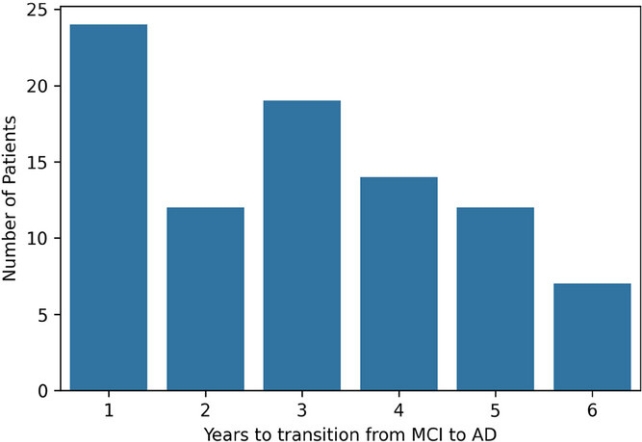Richard Morgan, a 93-year-old man, has the heart health and physical fitness of someone much younger. A recent case study examined his daily regimen, which includes regular weightlifting and low-intensity cardio. Additionally, he follows a high-protein diet, which may help maintain muscle mass while keeping body fat at a minimum.
Thanks for signing up!
Access your favorite topics in a personalized feed while you’re on the go.
download the app

According to a new case study published in December in the Journal of Applied Physiology, a person in their 90s can be as physically fit as someone much younger, thanks to a simple yet effective exercise routine and good nutrition. Richard Morgan, a retired 93-year-old man from Ireland, spends about 40 minutes a day exercising in his backyard shed. The study revealed that his heart health, muscle mass, and overall fitness are comparable to those of a healthy person in their 30s or 40s. Though Morgan may have some genetic advantages, his good health is at least partly attributed to the routine he began at the age of 73, according to the researchers. His habits, such as regular strength training, low-intensity cardio, and good nutrition, are all scientifically proven methods to extend lifespan and maintain fitness in the long run. Here are the six factors identified in the case study that may have contributed to his fitness and health in his 90s.1. Engage in low-intensity cardio most of the timeThe researchers observed Morgan’s exercise routine, which includes approximately 30 kilometers (just over 18 miles) of rowing each week. They found that about 70% of his workouts were at a light intensity level. This aligns with the recommended cardio training by doctors and exercise scientists for improving longevity, endurance, and overall performance. Low-intensity steady-state cardio involves exercising at a pace where one can comfortably converse without running out of breath. It falls within Zone 2 in terms of heart rate, typically between 60% and 70% of the maximal heart rate. Zone 2 cardio is ideal for improving performance and health as it helps the body’s cells to adapt to a higher output, akin to increasing the body’s endurance, as explained by Dr. Morgan Busko, a sports physician, to Business Insider previously.2. Include occasional bursts of high-intensity effortThe case study revealed that the remaining part of Morgan’s aerobic training consists of about 20% moderate intensity and about 10% high intensity, such as sprinting. This high-intensity training is vital as it indicates Morgan’s exceptional ability to utilize oxygen effectively during exercise, a crucial marker of overall cardio-respiratory health. Short, intense periods of exercise, performed at a pace that is unsustainable for long durations, are believed to be beneficial for building this type of fitness.3. Lift weights to prolong lifespanThe researchers also found that Morgan complements his rowing with twice-weekly weight training, including three sets of lunges, rows, and curls with dumbbells. Multiple studies have shown that weight training can help prevent chronic disease and premature death. It is not necessary to spend hours at the gym to benefit from weightlifting. Research suggests that 30 to 60 minutes of strength training per week is sufficient. Another important aspect of Morgan’s weight training is that he pushes each exercise set close to failure, which helps in effectively challenging the muscles to grow stronger over time. However, it is important to note that pushing to absolute failure or lifting the maximum weight for every lift can increase the risk of injury with little overall health benefit, as explained by a physical therapist to Business Insider previously.4. Ensure adequate protein intakeThe case study highlighted that in addition to regular exercise, Morgan follows a high-protein diet, consuming approximately 1 gram of protein per pound of his body weight every day. Maintaining a sufficient protein intake may have aided in preserving Morgan’s significant amount of muscle mass, about 104 pounds out of his total weight of 165 pounds, along with a low body fat percentage of 15%, comparable to that of a fit, younger individual. Protein is a crucial nutrient for building and preserving muscle mass, as well as regulating appetite. Recommendations suggest consuming around 0.7 grams of protein per pound of body weight. As individuals age, it becomes increasingly challenging to retain muscle mass, and some evidence indicates that consuming more protein may contribute to healthy aging.5. It is never too late to begin exercisingBesides his remarkable level of fitness, a notable aspect of Morgan’s case study is that he initiated his exercise routine relatively late in life, starting rowing as a hobby at the age of 73. Prior to his 70s, Morgan was not consistently engaged in physical activity. Evidence indicates that people in their 80s and 90s can still benefit from exercise by gaining muscle mass and strength, which can significantly improve overall health and quality of life.6. Consistency yields long-term resultsOne of the reasons behind Morgan’s successful fitness and health improvements is his unwavering adherence to his routine, as stated by the researchers. Physical changes resulting from diet and exercise require time, whether it involves building muscle, shedding fat, or enhancing overall health. Therefore, crash diets or fad workouts are generally discouraged by experts. Regardless of how effective a diet or workout routine is, one will not reap the benefits if it is abandoned. Therefore, the most effective longevity plan is one that can be maintained over the long term.












